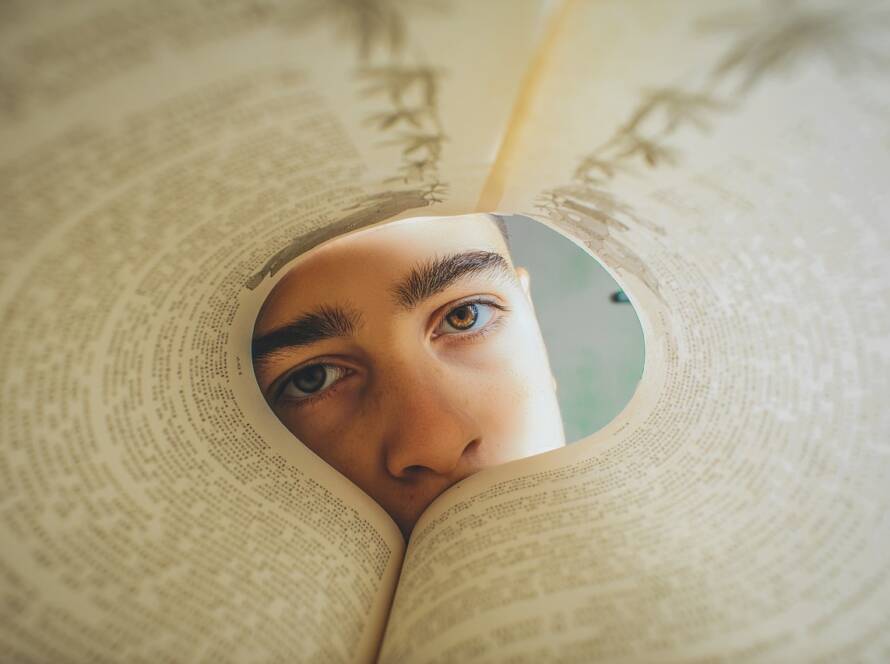In brief moments of quiet at work or at home, we can practice some of the so-called micro-techniques. These are small practices that can create significant transformations in our inner universe. Many moments of the day go past without us making use of them. Imagine waiting in line at the supermarket, or being on public transport. All of them can be turned into a form of spiritual practice. Once we become more accustomed to applying these techniques, we can even start using them while doing other actions, such as driving or talking to someone.
These simple micro-techniques range from observing the stages of respiration to more complex methods such as visualisation. They are particularly useful as most of us are not here to be monks meditating in a cave, but are engaged in life, while being devoted to and aware of the Divine at all times.
Micro-techniques are not a new invention. They appeared already in some of the ancient writings. They can be classified into four categories: methods that focus on the body and breathing; methods that focus on emotions and energy; mental methods; and methods that evoke consciousness.
A micro-technique that generates euphoria
The most accessible micro-techniques are those associated with the breath. Every emotion, every state of arousal or rest is accompanied by a specific rhythm of the respiration. In an ordinary person, the emotions and the states of arousal are what dictates the rhythm of breathing. By contrast, yogis or people who have received certain spiritual initiations voluntarily create a precise breathing rhythm. In this way the evoke the particular state that they desired. This means that in the case of this spiritual practice, the creation process is reversed: the breath is the cause and the emotion is the result.
There is a soothing breathing rhythm, an evocative rhythm, a rhythm that ignites love and another one that creates a state of concentration and so on.
One rhythm we’d like to suggest is based on the esoteric law of seven. The duration of inhalation is extended to seven heartbeats, then breath is retained for one heartbeat, exhalation is also seven beats and then we stay with empty lungs for one beat. So the rhythm is 7-1-7-1. This breathing style charges the whole being with stimulating and harmonious energies, awakening the state of ‘detached witness’ within.
In spiritual esotericism, the rhythm of 7-1-7-1 is understood as the natural force responsible for the emergence of the seven parts from the one and the return of the parts to unite within the one. At visual level this law is expressed in the way in which white light produces the seven colors when it is refracted in a prism, and the return of the seven colours to it. At an auditory level, the descent of the one sound, the primary logos, produces the seven sounds of the octave, to which they return. When a person breathes for a long time at this rate, they enter a frequency that creates unity between the seven parts that become one, and the one within them again expresses all seven.
After about twenty minutes of precise practice, a state of light, clear euphoria may appear, which is deeper and cleaner than the euphoria that appears as a result of consuming unnecessary drugs. It is important to mention that although the state that appears is light and clear and does not interfere while sitting or walking, it can be fatal while driving, and therefore, it is strictly forbidden to do this breathing exercise while driving.
A Tantric micro-technique for dealing with intense desires
Some micro-techniques work on our emotional well-being. Their purpose is most often to change the direction of negative emotions and convert them into positive emotions. This is without suppressing or repressing the energy and momentum of these emotions, without hiding them behind a fake mask, but guiding the energy in a beneficial direction. For those skilled in these micro-techniques, anger can instantly turn into clarity, sadness into compassion, lust and passion into serenity. That the more intense the negative emotion, the more intense the positive emotion it is transformed into.
This particular method originates in the Tantric text ‘Vijnana Bhairava Tantra’, one of the most beautiful spiritual pearls of the Eastern Esoteric Tradition. Sutra 96 says: “When desire arises, fix the mind there (at the source of the desire). Making the mind absolutely one-pointed, realise the essence of all reality.” That is, as soon as desire arises, do not look at the object of your desire (that which you crave for), but look directly at the desire.
Normally, when our consciousness encounters something attractive or appealing, we crave it. Then our attention flows towards the object of our craving and self-awareness disappears. But it’s exactly in this moment that we should turn attention inward, with curiosity to understand what is the nature of desire, what feeling, what vibration does it have, where is it in the body. This observation makes it possible to end the desire immediately and effortlessly.
The effect of this method culminates when practiced in real time. When, for instance, we are suddenly hit by an intense craving for sweets, or for sexual gratification, if we stop for a few moments and turn all the attention to the craving itself, it stops spontaneously and is absorbed back into place. Then suddenly there appears silence and inner freedom. The state of non-craving that appears creates an inner sweetness that is hard to describe. Repeated practice of this method creates inner freedom from all the pressures, anxieties and selfishness that desires create. The state of non-craving that appears gives rise to a sublime feeling, that nothing is missing and that there is a wholeness that is now emerging.


